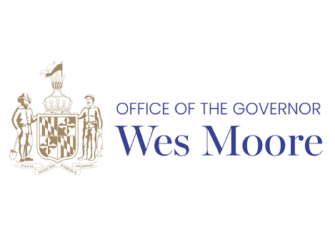
When we look at an unfinished puzzle, the spots where pieces are missing stare back at us. We become determined to find the missing pieces that fit perfectly into the open spaces in order to make the image complete. In the world of real estate development, that same puzzle becomes the next challenge/project and ultimately the solution – just on a much larger scale.
Developers are searching for those empty spaces, referred to as “infill sites.” Infill sites are typically located closer to the center of a community and are already served by public infrastructure including roads, water and sewer lines. Infill development takes vacant or under-used parcels within existing urban areas that are already largely developed, whereas infill “Re”development is adaptively repurposing a building or property into something useful. Both have many benefits including the following:
* Reducing consumption of forest and agricultural land
* Increased access of people to jobs, and jobs to labor force
* Reduces time, money, energy, and air pollution associated with commuting and other use of single occupant automobiles
* Strengthens real estate markets and property values
* Makes better use of existing infrastructure and lowers costs of public services such as: transit, sidewalks, water and sewer, school, and public safety (police, fire, ambulance)
* Replaces brownfields and abandoned industrial areas with functioning assets
* Adds to socioeconomic diversity
There are numerous examples of infill development and redevelopment on Delmarva. You may pass them on a regular basis without realizing the impact they have on local infrastructure, business development and the local economy.
Headquarters Live
Headquarters Live, downtown Salisbury’s newest entertainment venue was home to Fire Station 16 until it moved almost a decade ago. 115 South Division Street, a 1920’s construction, sat vacant for many years until the City of Salisbury decided to seize the opportunity to breathe new life into the historic building. Devreco had its own ideas about what belonged in the Old Fire House. After going door to door, business to business they discovered the community shared their interests. Devreco responded to the public’s request to transform the building into a music venue / performing arts space.
Salisbury originally declared Fire Station 16 surplus in 2008 and accepted proposals to redevelop the historic fire house in 2009 and 2012. After years of public discussion and meetings Devreco was the successful bidder in 2013. The developers invested nearly $1 million into repurposing the structure to a vibrant mix-use venue and office space.
The Gallery Building
Built in 1930, F. W. Woolworth Company anchored Salisbury’s downtown plaza for many years. After facing fierce retail competition in the mid-20th century, the company left the building and the property sat vacant for many more years. Redevelopment was introduced in 1992 when the Internal Revenue Service was looking for a new location. After two years and $2-million in renovations of over 60,000 square feet, The Plaza Gallery Building filled in the vacant space. The Gallery Building is now home to the Regional Art Institute and Gallery, federal and local government agencies, attorney’s and non-profit organizations.
River View Commons
Construction is underway on River View Commons, the old Feldman’s Furniture building. Renovations will transform the 19th century historic landmark into a multi-use building with available space for a restaurant, gallery, shops and offices. Plans also include an outside deck and public river walk along the Wicomico River and Mill Street.
North Division Street
For years 116-120 North Division Street in downtown Salisbury was a center of commercial activity with offices, a bar and restaurant and local flower shop. Once vacant the dilapidated buildings were in need of attention. The buildings were successfully renovated and now occupied with several entrepreneurial start-ups including photographers, videographers, landscapers and a management firm. The most predominant is Salisbury University, occupying space with the Salisbury University Art Gallery, a welcome addition to Salisbury’s Arts & Entertainment District.



Why should you care? Why is infill development good for our community?
Infill development falls perfectly into place with smart growth initiatives; development that supports economic growth, strong communities and environmental health. Smart growth solutions revitalize our cities, promote more compact and transit oriented development and protect open spaces. Smart growth incorporates regional considerations of sustainability to achieve a unique senses of community and place. When you look at the bigger picture, this effects our range of transportation, employment housing choices, natural and cultural resources and our quality of life. That’s why we think you would care about this and understand why we as developers do what we do.



